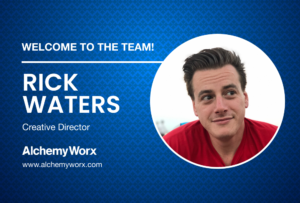Since the advent of social media one thing has been constant: change. As a result, we have come to expect and for the most part accept frequent changes on social media platforms. However, over the past year there have been more changes in a shorter period than ever. Given social media’s importance in marketing, this has left the plans of many marketers in disarray.
For those of us at Alchemy Worx, this isn’t a problem. There is opportunity in chaos.
We know that when major changes arise, they don’t just affect you. They also impact your competitors. Being able to pivot, overcome, and adapt, is key. With that in mind, let’s take a look at some of the recent changes, as well as some strategies you can apply to turn them into opportunities.
Tracking and Attribution
As we’re all aware by now, Apple’s recent iOS update blocked 3rd party pixel tracking (browser-side). This led Facebook to counter with its Conversion API (CAPI) tracking (server-side) in what Apple describes as a fight for consumer privacy.
While this may be true…
Understanding that data is worth more than oil & gold combined is the bigger part of Apple’s reasoning.
Want proof? Assuming you have CAPI installed, go into:
• Business Manager > Events Manager
• Events Manager > Aggregated Events Measurement
You’ll find the data stored here is all opt-out data (opted-out of tracking). Apple is selling it back to Facebook, based on attribution from your ads.
Google is also following suit within the next year or two by launching its version of the ATP (app-tracking transparency).
This leaves social media in a predicament, because while Social is changing, the medium hasn’t.

Consumers are using social media more than ever before – on average 147-mins per day.
Brands that fostered consumer experience on social and 1st party data strategies (on multiple channels), saw dramatic increases in revenue.

In the wake of the pandemic, the days of siloing channels are over. Brands must work cross-channel, sharing insights across every marketing campaign. Brands that have taken this approach, using cross-channel data to create and target audiences, have gained a leg-up against their competitors who are too slow to change.
Audiences
The recent “opt-out” tracking barrier has had a significant impact on sales. This is due to the inaccuracy of the audiences created on channels using 3rd party data and built on profiles of every single individual. Now that they can’t access accurate data, this has led to a decay in lookalike audiences and targeting.
Audiences are no longer derived from individual preferences and behaviors. Instead, they are based on Cohorts and Segments (i.e., larger audiences). As a result, while lookalikes previously ruled throughout, changes have illuminated the fact that each account and each brand is especially different.
The strategies that used to work for everyone, have now proven to be even more customized for each brand. This also applies to each brand’s accountability for its data. Using customer data for audience management across social media is still VERY underutilized.
Looking at the entire customer experience, there should be no reason why social isn’t used to touch retention audiences. Social is primarily used for acquisition… Which makes sense!
However, there is typically little thought about retention on the social side. It is almost as though the customer’s forgotten after that first sale.
Most ESPs have integrations with platforms like Facebook, making it simple to share data across all channels.
Example audiences that you should be testing for Acquisition and Retention:
• Acquisition
• Cold Prospecting: Anyone who has never engaged with the brand before.
• Retargeting: From the point when, anyone sees an ad, to their first purchase.
• Retention
• Engaged: Those that have opened or clicked on an email and/or have purchased, in the past 90 days.
• Unengaged: Everyone else… Unsubscribes. Made a purchase 90+ days ago.
Make changes where needed as every audience and sales cycle is different.
Everyone understands the idea of the buying process, but there’s a lot lost in practice on social.
Social provides an amazing opportunity to stay in-tune with the retention side of the business.
There are many audience segments to dive into when looking at retention.
Some segment examples of who you should be targeting are:
• Non-buyers who have opened and/or clicked on an email in the past 30/60/90 days.
• Unsubscribers
• 1x buyers who haven’t purchased again in 30/45/60/90/180 days (depends on the sales cycle and AOV).
• Multi-buyers
• Past Customers (All-Time)
• VIP and most loyal customers
• Big-spenders
• Discount shoppers
• This list goes on and on…
The messaging changes based on the segment.
Hitting these retention audiences can also give you a leg up on the customer service front. Customer service is one of the main reasons why consumers follow brands on Social Media.

This makes retention strategies even more important in maximizing consumer behavior. Reaching these audiences can help relieve some of the pressure from higher CPMs, which is something nearly every brand has experienced since Q3 2021.
CPM’s
CPMs continue to increase as more competition enters the social space. 2020 in general was a wild year for everyone, but for retail it was Armageddon. In Q3 of 2020 – a period that is usually the second-largest sales time of the year – retail as a whole lost around 60% of revenue.
In contrast, Shopify reported an increase in platform revenue of 94% over this same period.
Although the pivot was slow, many big brands that sat out of spending on social media in 2020, came through in full force in 2021. This overwhelming increase in ad spend, CPMs climb to new highs. Costs have increased, but conversion rates across the board have held steady.

This means two things:
• Audience management is important and still holds weight.
• Finding a solution to decrease cold prospecting campaign costs is a must.
Through some simple experimentations, testing top-of-funnel objectives has proven to be lucrative.
Using an engagement objective for your cold prospecting audiences has driven down CPMs from -40% to -90%.
Now, running these types of campaigns does require some extra retargeting steps (audiences based on % of the content consumed). But for some brands, especially those with high AOVs (>$250) and/or longer sales cycles (>14-days), this adjustment has led to a decrease in overall cost per purchase. Add that to your testing plan this quarter and see how it treats you.
Just remember, content is still #1. However, if your creative is sub-par, targeting changes won’t necessarily help performance.
Content: Quantity, Quality, or Both?
Content still contends for the top spot when determining success: Product > Content > Audience.
There are two sides (of social) to understand, Organic Social and Paid Social. Both sides have algorithms that run tangentially and at times intersect. In the case of Organic Social, quantity is more important than quality. As for Paid Social, quality is more important than quantity.
This means that quantity is as important as quality. However, keep in mind that even if a piece of content works well for one, it doesn’t mean it’ll work well for the other.
Content across Organic has been hit with a significant engagement decrease over the years.
The average engagement rate for each platform (2021):
• Facebook: 0.13%
• Instagram: 0.83%
• Twitter: 0.05%
• TikTok: 5.96%
Platforms are forcing everyone into the pay-to-play game. Which leads to this question:
How can we introduce a strategy to the entire social ecosystem that will help define quality content?
Believe it or not, it’s simple and requires little resources to complete.
Audit your channels, create your benchmarks, and know the average engagement rate.
Example:
• Let’s say the average engagement rate for your posts is 3%.
• Then make sure any post, which passes over a 5% engagement rate, is automatically boosted/ran as an ad.
• Run it for $1 a day, for 30-days, and compare the results to your other ads.
• If it does well, continue to use it in your campaigns.
• If it does poorly, your organic content is still prioritized higher in everyone’s feed and you’re out $30.
Integrating Organic + Paid will create a constant flow of new ads leveraging content that you already know your audience finds relevant and engaging. With all that said, now you need a ton of content.
Content Creation
How do you get a lot of content, without breaking the bank?
Another simple solution…
Influencers.
Some brands and agencies see influencers as conversion-first mechanisms that need to Cash-Flow. While this is still a great method, we have changed how we perceive influencers. Instead of prioritizing the return coming from an influencer, all we want is content.
However, some influencers can charge upwards of $1,000 for a great video post, leaving you crossing your fingers for some sales.
What we’ve done is take that same budget and use it to produce lots of images and videos. This provides a library of creative that we now own and can reiterate, edit, and otherwise use across all channels.
You could do something similar with a photoshoot, but the loss of authenticity and the price per piece of content is much higher.
The best part is, whether they have 100 followers or 100,000, all we care about is if they create quality content. This approach opens the door for a lot more partnerships and ongoing relationships.
The resulting content then gets injected into the rest of the omni-channel ecosystems.
Take-Away
The world has experienced seismic changes over the past few years. Nearly everything has been impacted, including marketing channels.
Alchemy Worx has embraced the chaos from day one, finding opportunities and solutions where others saw disaster. We hope you will consider the strategies described here. Test and apply them to your processes then measure the results.
Of course, we would also love to help you implement these strategies. So don’t hesitate to reach out and schedule a Social Strategy Session.




